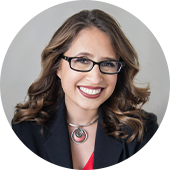It should come as no surprise that the spaces we occupy every day have a huge impact on our overall wellness. The Environmental Protection Agency and Vancouver Coastal Health report that Americans and Canadians spend about 90% of their time indoors. But what about the time we spend outdoors?
Your Welcoa membership has expired.
A Personal Reflection: Grief 101 — Understanding Grief in the Workplace
I remember sitting at my desk at my first job. I started it knowing that my dad had cancer, but not grasping the fact that he could die. Deep down, I knew it was probable, but I could not come to terms that a world could exist without him.
His dream was for me to pursue my dream career in China. So there I was—literally on the other side of the world from my home in New York—sitting at my desk, when he called. Throughout his cancer treatments, I was back and forth from China. He would always tell me to go back. This time was different. This time he asked me to come home. Two days after I did, my father took his last breath.
My company supported me leaving abruptly. I contacted my clients and briefed a colleague to take over to ensure a smooth transition. I admitted that I was not sure when (or if) I was coming back. They told me that I had a job—if I wanted it—when I was ready. When the CEO was in NY, she even let me tag along to a client bid, which was awesome.
The next few months were a blur. My mom and I were living in our very own grief bubble. But, as I was at the start of my career, I knew I needed to get back to work eventually. Six months later, they welcomed me back and gave me a raise (which I did ask for).
Once I returned, I threw myself in my work but ended up drowning in my grief. While my company was fantastic, there was no grief support. No one asked me about my dad or how I was doing. I don’t believe they were specifically not trying to say anything, but the void was there. I had many visits to the bathroom to cry in private.
I felt extremely grateful to my employer for being supportive of my leave. I worked hard and did the best work I possibly could. But, my grief was all-encompassing, and two years later, I ended up having to make the difficult decision to leave China.
I often wonder what could have been different, or if there was something else that could have been done to support me. This was fifteen years ago when grief was talked about even less than it is now. I don’t fault them.
I gave them all that I had because of how valued they made me feel.
This is one of the many experiences that fuel me to do the work that I do. My personal experience, coupled with my business partner’s, combined with our professional training, was the impetus to create the Grief 101 — Understanding Grief in the Workplace course. Our goal is to help employees feel supported at work. To help managers support employees (and themselves). To create dialogue. To provide resources and so much more. It is our gift to transform our pain and loss to help pave the way to make it smoother for others.
Grief 101: Understanding Grief in the Workplace
Grief is more than bereavement. Studies have shown how the effects of grief greatly impact productivity, engagement, and resilience in the workplace – putting a huge price tag on grief for employers. Throughout this course, participants will examine the many layers and manifestations of grief at work (and in life) and the importance of making space – and working through – grief. They will develop a thorough understanding of what grief really is and learn tools to support employees and colleagues alike, which will help reduce on-the-job errors, attrition, and increase productivity. Participants will explore the needs of their team via exercises created to help identify opportunities for improvement in their workplace and also learn tools to implement right away.
START THE COURSE »




